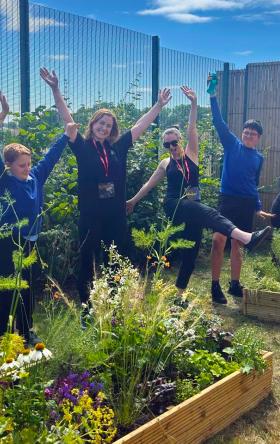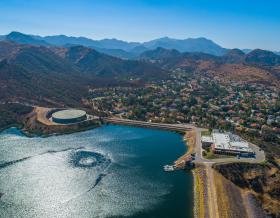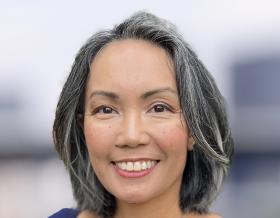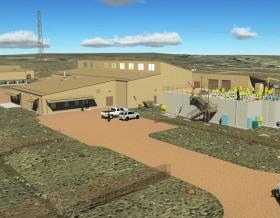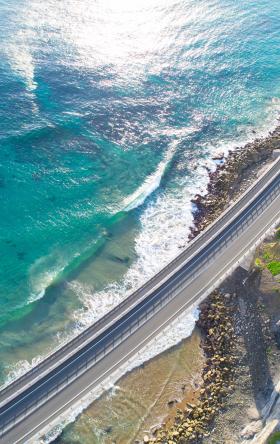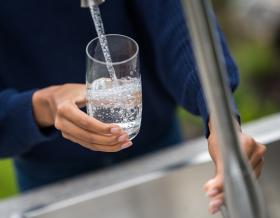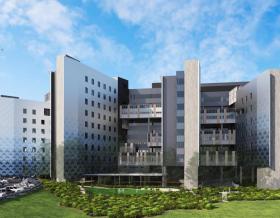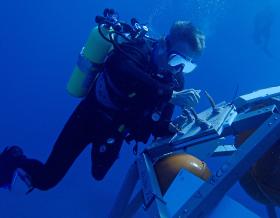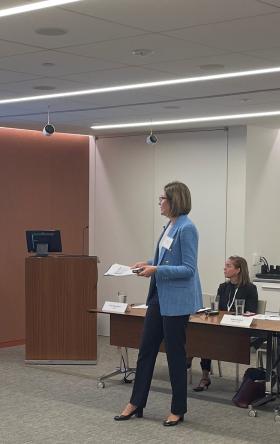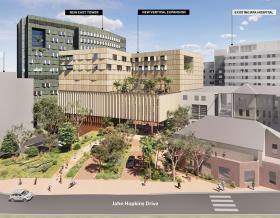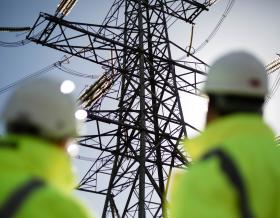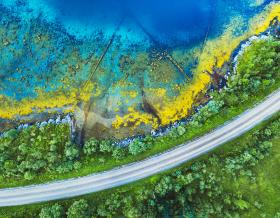Jack Garland Airport Remediation Project
Improving the health and safety of the City of North Bay and its citizens by tackling PFAS contamination

Jack Garland Airport in Ontario, Canada straddles a watershed divide between the Ottawa River to the east and the Great Lakes Basin to the west. As part of its storied history, firefighter training exercises were conducted at Jack Garland Airport from the 1970s to mid-1990s with aqueous film-forming foams (AFFF) that contain per- and poly-fluoroalkyl substances (PFAS). PFAS are chemically and biologically persistent and are highly mobile.
These manmade substances can be found in a variety of industrial and consumers products, but their impact on human and environmental health just started becoming well documented in recent years.
When PFAS was detected in Trout Lake, the source of the municipality’s drinking water, Jack Garland Airport was identified as one site of contamination, with the main source found to be PFAS in the firefighting foam.
Although firefighting foam containing PFAS was an accepted practice in accordance with regulations at that time, the foams seeped into the ground and the PFAS migrated into Trout Lake.
Since 2017, the City of North Bay has worked with several key partners, including the Department of National Defence, the Ministry of the Environment, Conservation and Parks, and the North Bay Parry Sound District Health Unit to continually test and monitor PFAS levels in Trout Lake, Lees Creek and residential wells close to the airport.
Tackling the challenge at Jack Garland Airport…
Tackling a challenge of this scale and complexity requires a bespoke formula of talent and technology. The scope of work starts with a comprehensive predesign investigation, site-specific risk assessment, and treatability studies to assess potential remedial options for the impacted soils, groundwater and surface water. This is combined with the development of a risk management plan, the preparation of a remedial design and tender package; providing technical assistance during construction; and performance monitoring to confirm that all the remedial objectives are achieved. Jacobs is supporting the city with a drinking water treatability study, evaluating options to proactively enhance water treatment processes to meet potential future regulatory requirements.
"Addressing the public health and safety concerns of the North Bay community with comprehensive cleanup of the airport's PFAS contaminants is our team's top priority," says Jacobs Global Environmental Market Director Chrissy Thom. "As an industry leader in environmental consulting, our unique ability to shape PFAS solutions is drawn from our thorough understanding of PFAS chemical behavior, regulatory requirements and innovative treatment and remediation approaches."
In the near term, this process includes the removal and treatment of the most contaminated soil, the injection of adsorptive material along the property boundary to treat exiting groundwater, and the placement of adsorptive material at exit locations to prevent PFAS in surface water from migrating downstream.
"What we'll be doing this coming year at the firefighter training area is excavating some soil and sending it to an offsite disposal facility in Ontario equipped with leachate collection and treatment processes" says Carol Mowder, a chemical engineer and Jacobs’ senior technical consultant for the work in North Bay.
“Another option we're considering is to put activated carbon into the ground," says Travis Tan, Jacobs' project manager for the North Bay remediation. "It's kind of like a tap filter that will filter the PFAS before the groundwater leaves the site."
… and extending our PFAS experience
PFAS and other emerging contaminants is one of Jacobs core competencies and central to our sustainability ethos. Jacobs’ ability to shape the industry for PFAS solutions is drawn from our multidisciplinary expertise and experience in the environmental, water, wastewater, solid waste, aviation and infrastructure domains. For over ten years, Jacobs' water and environmental technologists have been supporting municipal, national government and commercial clients around the world with the assessment and treatment of PFAS.
Additionally, since 2013, the company has been working on multiple U.S. Department of Defense and Australian Department of Defence research projects for PFAS characterization, treatment and remediation. Jacobs technologists and scientists are partnering with the world's leading academics to better characterize, understand behavior and develop increasingly effective cleanup technologies for PFAS-contaminated media, with a focus on natural treatment alternatives.
Our leadership is predicated on deep knowledge of our clients’ industries and processes combined with a thorough understanding of PFAS chemical behavior, regulatory issues and developing treatment approaches. Our work supporting our clients’ sustainability goals has also been recognized by industry. The Environmental Business Journal and Climate Change Business Journal have also recognized Jacobs with five awards in 2023 for leadership and outstanding innovation in PFAS site evaluation, data-driven remediation engineering, carbon sequestered nature-based solutions and as a company dedicating more than 50-years to constant innovation towards creating a more connected, sustainable world.
Did you know?
-
655 ha
site size (hectares)
-
13
focused areas (Areas of Potential Environmental Concern [APEC])
-
632 +
number of samples collected by Jacobs to date
-
$ 20 M
value of current funding for the PFAS cleanup
-
114
boreholes drilled
-
86
monitoring wells installed to date
“Jacobs’ contributions to the North Bay Airport PFAS project have been excellent. Jacobs has demonstrated superior technical competence in all areas of the PFAS project (environmental investigations, risk assessment, drinking water treatment, remediation options, etc.). Also of noted importance is Jacobs’ ability to communicate the highly technical aspects of the project to stakeholders including city staff, residents, interest groups, federal and provincial government and regulators.”
